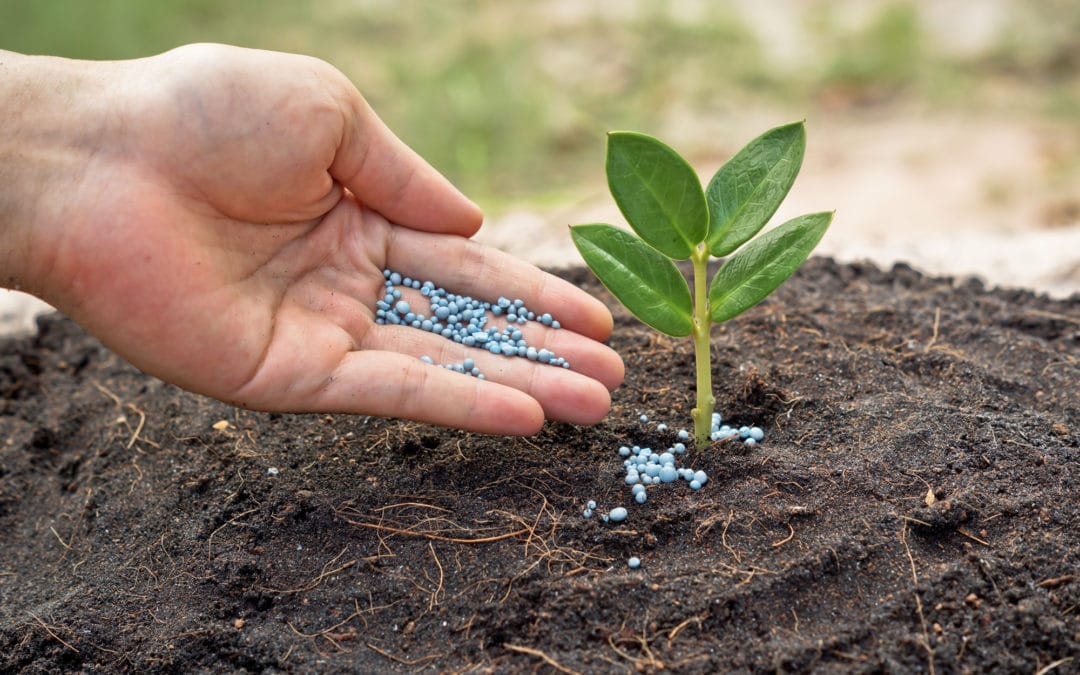For a large portion of the United States, the winter season typically means snow shoveling and bundling up against the freezing temperature. The mower has been put away and lawn care is the last thing on your mind. However, winter fertilization can help your lawn look lush and healthy when spring arrives. Cool season grasses like Kentucky bluegrass, tall fescue, and perennial ryegrass respond best to early winter and late fall fertilization. These cool season lawns typically grow best in regions where the spring temperatures average between 65 and 80 degrees Fahrenheit. Warm season grasses like Bermuda can wait until late spring for fertilizing.
Why Use Winter Fertilizer?
Winter fertilizer can be a key component to helping the lawn regain essential nutrients that may have been depleted from its soils throughout the hottest of the summer and even early fall days. Winter fertilizer helps the root system grow strong and deeper, which can lead to a fuller, healthier lawn in the spring. When you apply the fertilizer at the right time it’s able to feed and benefit the root system of the lawn throughout even the harshest days of winter.
Components of Winter Fertilizer
Lawn fertilizer contains nitrogen and phosphorus. Nitrogen helps with stem growth, while phosphorus is important for the root system. Winter fertilizers also are high in potassium, which plants need to thrive. It’s an essential nutrient that helps your lawn increase its hardiness or tolerance for cold temperatures as well as stress. Plants also require potassium to be able to absorb other essential nutrients.
Additional nutrients found in fertilizer include but are not limited to calcium, carbon, hydrogen, magnesium, oxygen, and sulfur.
Reading the Fertilizer Numbers
To determine how much of each nutrient the fertilizer contains, you need to read the numbers. The first number is for the nitrogen (N) amount, the second is for the phosphorus (P), and the third is for the potassium (K) amount. The numbers should appear prominently on the winter fertilizer bag, usually on the front label.
In general, a winter fertilizer for your lawn should have a much higher potassium amount than other fertilizers. For example. a standard fertilizer may have a potassium level of 4, while its winter version has a level of 14.
According to Today’s Homeowner, established lawns need “feeding with at least three parts nitrogen for every one part potassium to provide maximum green-up and overall health.” At least half should be slow release nitrogen.
Fertilizer Applications
Before applying, conduct a soil test to determine if the potassium levels are adequate. Home soil test kits easily are found at any lawn and garden center. Usually a lawn needs only one winter fertilizer application, but don’t apply it until after the absolute last mowing of the season. In areas where the coldest temperatures don’t arrive until late November, it’s okay to wait. Avoid applying a winter fertilizer on any day when it’s windy. These fertilizers can be applied to either a wet or dry lawn. Typically, it’s easiest to apply lawn fertilizer using a spreader. For large lawns, consider one that attaches to your riding mower.
For a great looking lawn in the spring, consider winter fertilizer for your cool season grass. Contact Green Acres Landscape with all of your winter lawn care questions and concerns!

